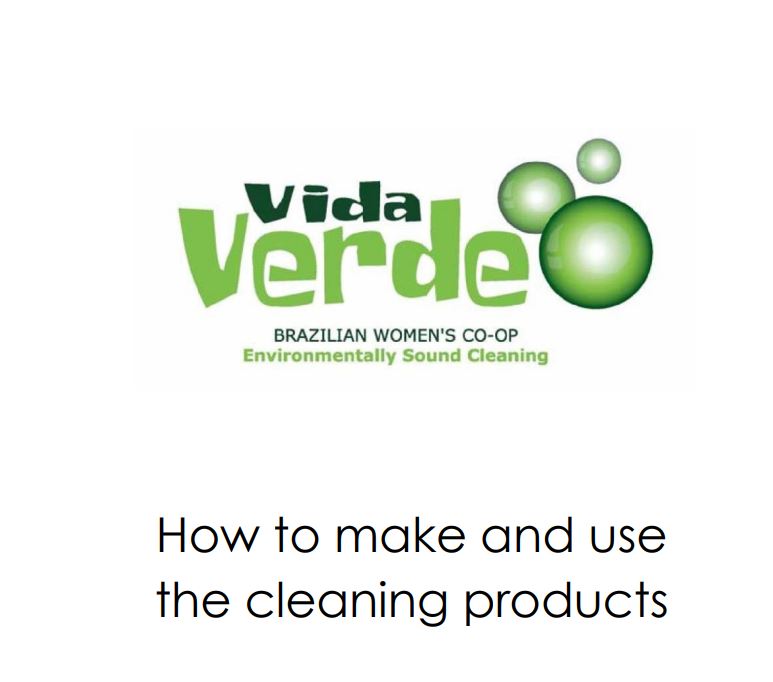‘Advanced Cleaning Product Formulations’ PDF Quick download link is given at the bottom of this article. You can see the PDF demo, size of the PDF, page numbers, and direct download Free PDF of ‘Cleaning products formulations book’ using the download button.
Professional Cleaning Formulation Guide PDF Free Download

How to Make And Use The Cleaning Products
Common chemicals in mainstream cleaning products and some of the health risks associated with them
Ammonia— Used to make plastics, explosives, paint, cloth and pesticides, ammonia is also among the most common ingredients in glass cleaners, toilet bowl cleaners, all-purpose cleaners, furniture polish and disinfectants.
Health risks from ammonia are serious because this is a corrosive gas. Breathing without a special nose protection near any product that contains ammonia may cause immediate eye, nose and throat irritation and this gas may also cause blindness.
Bleach — Possibly one of the most used cleaning products, especially for bathrooms and laundry, bleach can be easily overused causing very serious problems for people and the environment.
Health risks: if bleach is ever mixed with ammonia, it will create fumes so strong it may cause the lungs to suddenly stop.
If it comes in contact with the skin, bleach will certainly burn.
If mixed with common soap, it may create “mustard gas,” the same that was used to kill the enemy during World War.
Bleach mixed with any organic matter will generate chloroform, a carcinogen.
This may happen when someone is simply cleaning the kitchen counter.
Butyl Cellosolve — Found in glass cleaners, oven cleaners and products advertised as “excellent to cut grease,” as well as carpet cleaners and stain-removers.
Health Risks: made by Eastman Kodak, this chemical, with a sweet smell, is associated with reproductive problems, fertility reduction, embryonic death and birth defects, in studies done in animals.
In humans, it has been associated with serious kidney and liver problems, also being a neurotoxin that may destroy the nervous system.
Formaldehyde — Used as a disinfectant, germicide and embalming fluid, formaldehyde is among the 25 most abundantly produced chemicals in the world.
It is found in plastics, glass mirrors, explosives, artificial silk, dyes, and in the manufacture of slow-release fertilizers, as well as in rubber, food, makeup, petroleum, pharmaceuticals, and in textile industries.
Health risks: people sensitive to formaldehyde don’t even need to smell it to be victims of terrible headaches.
Children are more sensitive and show signs of respiratory difficulties. Burning of the eyes, bronchitis, asthma, pneumonia and dermatitis are some of the effects of this chemical for those in close contact with it.
According to the Environmental Protection Agency, in a special 1987 report, formaldehyde causes cancer.
Hydrofluoric Acid — With a variety of industrial uses, this highly corrosive chemical is also an ingredient in metal and toilet bowl cleaners.
Health Risks: more than 1,000 burns from HF are reported every year.
It is extremely dangerous, because it even eats through gloves that can be a protection with other products.
It is known to destroy glass, which is otherwise indestructible. In contact with the eyes, it may cause blindness.
It is also highly toxic if inhalated.
Hydrochloric and Phosphoric acids — Found in “allpurpose cleaners,” these chemicals are highly corrosive.
Health Risks include serious wounds, if in contact with the skin.
They can also cause damage to the liver and to the central nervous system.
If they come in contact with the eyes, they can cause blindness.
Sulfuric acid — Used in agricultural fertilizers, in plastics, paint, pharmaceuticals, soaps and detergents, this is also a common ingredient in toilet bowl cleaners, as well as metal polish products.
Health Risks include burns to the skin as well as the nasal passages and the eyes. It is also a known carcinogen
All Purpose Cleaning: The Vida Verde home cleaning recipes of Fantastic, Fabulous, and Magic had overall average efficiencies greater than 85% and would be considered effective based on the Massachusetts Toxics Use Reduction Institute Surface Solutions Laboratory testing methodology for all purpose cleaning and for Green Seal GS 37 requirements.
The three Vida Verde cleaners were effective in removing the lab soil with a manual wiping action.
Each of the three formulations performed on the same level as the traditional cleaner it was tested against, Formula 409 All Purpose Cleaner.
Bathroom Cleaning: The Vida Verde bathroom cleaning recipes of Fantastic and Magic had overall average efficiencies greater than 90% and would be considered effective based on the Massachusetts Toxics Use Reduction Institute Surface Solutions Laboratory testing methodology for bathroom cleaning and for Green Seal GS 37 requirements.
The two Vida Verde cleaners were effective in removing the lab bathroom soil with a manual wiping action.
Each of the two formulations performed better than the traditional cleaner it wastested against, Comet Bathroom Cleaner.
| Author | – |
| Language | English |
| No. of Pages | 16 |
| PDF Size | 5.7 MB |
| Category | Chemistry |
| Source/Credits | www.turi.org |
Cleaning Products Formulations Volume 2 PDF Download
Cleaning Products Formulations Volume 4 PDF Download
Cleaning Products Formulations Volume 5 PDF Download
Professional Cleaning Formulation Guide PDF Free Download
